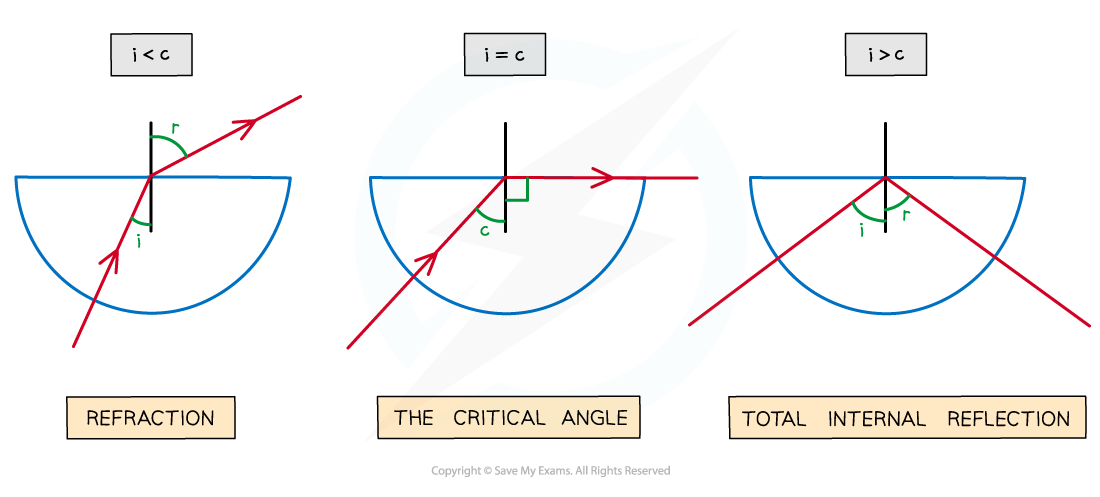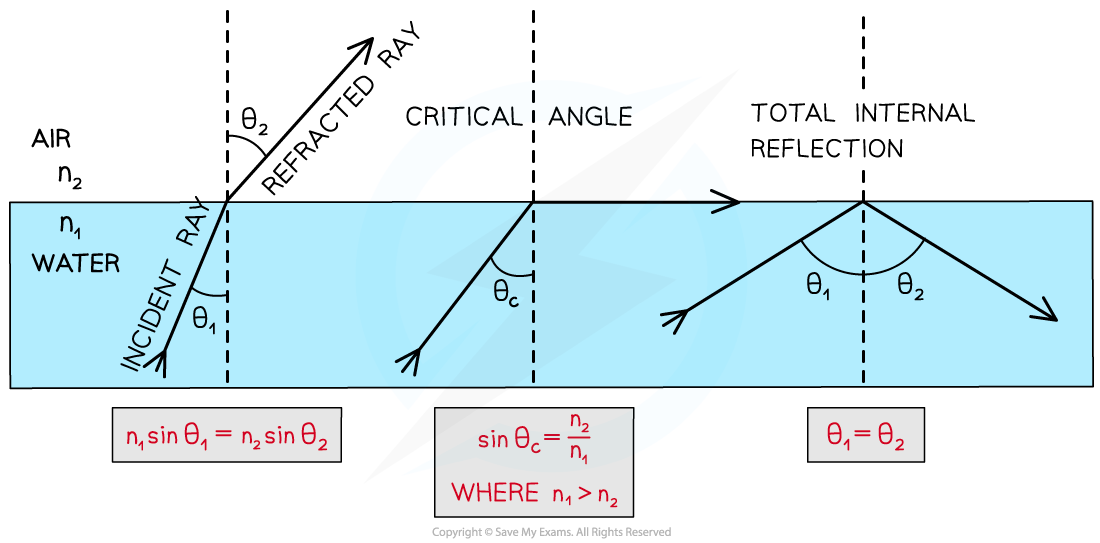Total Internal Reflection (Edexcel International AS Physics): Revision Note
Exam code: XPH11
Total Internal Reflection
Total internal reflection (TIR) occurs when:
The angle of incidence is greater than the critical angle and the incident refractive index n1 is greater than the refractive index of the material at the boundary n2
Therefore, the two conditions for total internal reflection are:
The angle of incidence, θ1 > the critical angle, C
Refractive index n1 > refractive index n2 (air)

Diagram showing refraction, the critical angle and total internal reflection
Two conditions are necessary for total internal reflection to occur:
The light must be going from a more dense medium into a less dense one
The angle of incidence must be greater than the critical angle

Examiner Tips and Tricks
If asked to name the phenomena make sure you give the whole name - Total Internal Reflection. Remember: Total Internal Reflection occurs when going from a more dense to a less dense material and ALL of the light is reflected. If asked to explain what is meant by the critical angle, you can draw the diagram above (showing the three semi-circular blocks).

Unlock more, it's free!
Did this page help you?